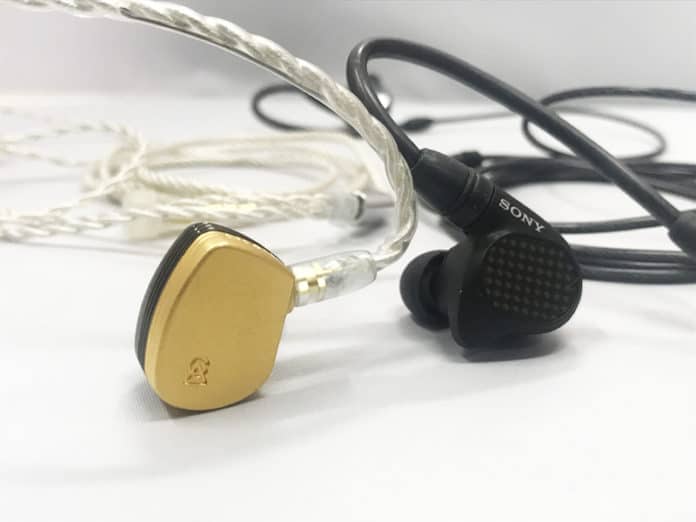I recently did a review of the Sony IER-M9. And after that review, I had a handful of you asking about the differences between it and the Campfire Audio Solaris. Both IEMs go for $1499, so it made complete sense to ask such a question. I didn’t want to respond to the questions with a simple, general answer. So I took some time over this week to listen side-by-side. Which one fits better with your sound signature preferences? Let’s take a closer look with this Sony IER-M9 vs Campfire Audio Solaris Comparison Review.
Sony IER-M9 vs Campfire Audio Solaris Comparison Review
In the Box
| Sony IER-M9 | Campfire Audio Solaris |
| Sony IER-M9 earphones | Campfire Audio Solaris earphones |
| unbalanced MMCX cable with 3.5 mm connector | unbalanced MMCX cable with 3.5 mm connector |
| balanced MMCX cable with 4.4 mm connector | Final Audio E-Type eartips (xs, s, m, l, xl) |
| silicone hybrid eartips (ss, s, sm, m, ml, l, ll) | silicone eartips (s, m, l) |
| triple comfort tips (ss, s, sm, m, ml, l, ll) | foam tips (s, m, l) |
| cleaning cloth | cleaning tool |
| shirt clip | lapel pin |
| carrying case | drawstring protective sleeve |
| documentation | zipping leather carrying case |
| documentation |
Design
Look and Feel
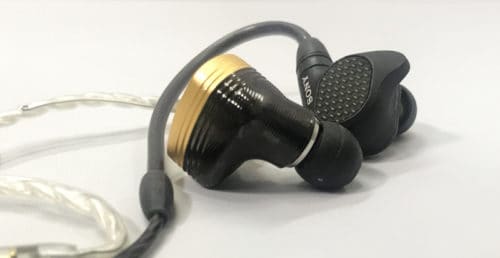
The Sony IER-M9 and the Campfire Audio Solaris have very different looks and feels. On one hand, the IER-M9 feels light. It is made of magnesium and has an understated look with a matte-black finish. It has a little carbon fiber design plate on the back, making it look more expensive though. Its shape and size follows the shape of the ear.
By contrast, the Campfire Audio Solaris has a more flashy design. It sports a gold color on the outside of its rippled housing. Compared to the IER-M9, its shells are large. Their shape was built specifically to optimize sound quality. And while the shape is a bit strange as a result, the attention to detail on the outside of the shell makes it pretty.
Comfort and Fit

The Sony IER-M9 and the Campfire Audio Solaris fit differently and will work better or worse for different ears. The fit of the IER-M9 fit much better for my pretty small ears than the Solaris. However, for those with larger ears, you might have a great fit with Solaris.
Additionally, the cable of both earphones include earhooks. They differ from each other because the shape of the hook of the IER-M9 is malleable and will return to its position when you move it. By contrast, the earhooks of the Solaris cable curve to whatever shape you bend them.
Cables
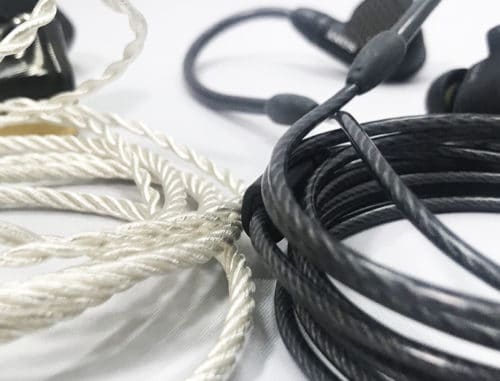
Both the Sony IER-M9 and the Campfire Audio Solaris have unbalanced, detachable, MMCX cables with 3.5 mm connectors. Additionally, the IER-M9 comes with a balanced MMCX cable with a 4.4 mm connector. The design of the two cables is similar to each other. The cable of the IER-M9 is a silver-coated OFC cable. It has a braided cable that is then wrapped in a silk-braid jacket. This jacket specifically aims to reduce vibrations in the cable (which typically result in cable bump noise).
On the other hand, the cable of the Solaris is a silver-plated copper litz cable. The conductors have a thicker diameter than the IER-M9 but maintains a sense of malleability, making it super manageable.
Drivers
While both the Sony IER-M9 and Campfire Audio Solaris utilize the quickness and clarity of balanced armature drivers, their designs are different. On one hand, the IER-M9 has 5 balanced armatures. The tweeter is made of magnesium, and all the drivers are housed in a magnesium frame. This frame helps to avoid unwelcome vibrations!
By comparison, the Solaris has a hybrid driver design, featuring one dynamic driver and 3 balanced armatures. It has a specifically designed 3D acoustic interior. Additionally, it utilizes the same kinds of technology in the other high-end Campfire Audio IEMs, including the Tuned Acoustic Expansion Chamber and the Polarity Tuned Chamber.
Sound
Low Frequencies
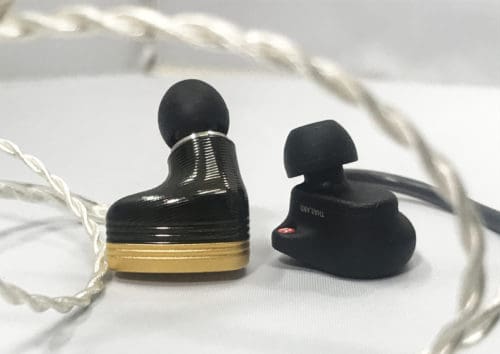
Both the Sony IER-M9 and the Campfire Audio Solaris have a nice thick, low end with emphasis in the sub region. Neither IEM has over-energetic lows. However, in addition to the sub boost, the IER-M9 also has a boost around what sounds like 80Hz. As a result, kick drums tend to sit a little bit louder in the mix than normal. It also seems to bring the kick closer in space.
By contrast, the low end of the Solaris has a quality of evenness and naturalism. As a result, kick drums, bass guitars, bass synths, and other instruments with rich low end information come through with realism and a sense of wholeness. While it has a great sense of extension, the lows feel like they have less emphasis in general than the IER-M9.
One thing both the IER-M9 and the Solaris do well is their low-end tightness and quickness. There is a feeling of punctuality from both of them and it contributes to the emotional impact low-frequencies have on the mix as a whole.
For example…
For example, when I was listening to the song I’m Callin’ by Tennis, the sense of movement of the kick drum, and the way the compressors react to it when it hits in the mix feels actually quite similar in both the Sony IER-M9 and the Campfire Audio Solaris. As a result, the kick contributes to the groove in a similar way with both IEMs. However, the actual space the kick takes up feels a bit different. With the Sony IER-M9, the kick drum sounds closer in space, a little bit louder in the mix, and tonally centered around that 80-Hz-sounding boost. It has a sense of thump that feels different from the Solaris.
On the other hand, the kick sounds deeper in both frequency and spatiality. Tonally, it sits evenly in the mix, but still has that little sense of sub energy which gives it impact. Additionally, it seems to be quieter in the mix than the IER-M9, setting it back in space. This backwardness also gives it a wider feeling, like the kick takes up more space despite the fact that it is quieter in the mix.
Middle Frequencies
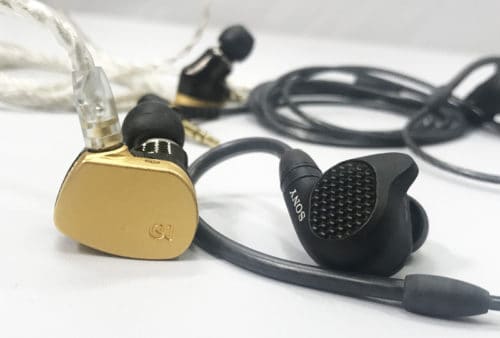
The middle frequencies of the Sony IER-M9 and the Campfire Solaris start to reveal the differences between the two IEMs. On one hand, the IER-M9 seems to have a greater low-mid emphasis. It has an even middle midrange, and then a high-mid response that favors the high-mids. This response pushes bass guitars and vocals forward in space, and shapes the mix toward articulation and presence. Vocals tend to sit louder in the mix than usual.
In comparison, the midrange of the Solaris feels like it has a greater sense of spaciousness and separation. The low-mids have detail and energy, but sit lower in the mix compared to the IER-M9. The middle part of the midrange is similar in frequency content but different in energy. While the Solaris maintains a sense of harmonic complexity, it has a more energetic dynamic which creates a sense of space. Additionally, its high-mids feel slightly colorful, but ultimately feel full and harmonically complex. Vocals don’t stand apart from the mix, but rather sit where they were intentionally placed by the mixer. And because of the of the sense of dynamic movement in the mids, this leaves room for plenty of extra detail to shine through.
For example…
For example, when I was listening to the song Thanks for Nothing by Middle Brother the bass guitar in the song felt more forward and loud in the mix when I listened with the Sony IER-M9 than with the Campfire Audio Solaris. The mix of acoustic guitar, and drums felt similar in the middle part of the midrange, but there seemed to be a bit more nuance in the separation between the ghost notes of the snare and the attack on the strings of the acoustic with the Solaris. Additionally, the vocal sounded a bit more forward in the mix with the IER-M9 than the Solaris. This forwardness gave it a pretty sense of intimacy, clarity, and articulation which was not emphasized in the same way with the Solaris.
By comparison, the vocals felt a little bit less intimate, although had a similar amount of clarity because of the dynamic energy leaving space for it.
High Frequencies
The shape of the high-frequencies of the Sony IER-M9 and the Campfire Audio Solaris are different from one another. As a result, they give a different vibe to songs and work better or worse depending on the song, genre, and priorities/preferences of the listener. On one hand, the IER-M9 has a thinner high-end with emphasis at the top range of the lower treble and emphasis in the upper octave. As a result, it has a sense of articulation and air for cymbals, vocals, and strings. A cut in the upper treble helps the earphones maintain a sense of detail without contributing to harshness or sibilance.
I’ve read reviews of the IER-M9 that describe it as a dark earphone. I don’t think this is true, and I interpret the high-end differently. I think the big dip in the upper treble can make it feel dark, even though super high-end energy is still there. And this energy manifests itself with the specificity of details in percussion, air in vocals, and a sense of soundstage height. It is actually a unique and interesting high-end that works well for brighter recordings that need high-end detail but need their harshness to be tamed.
By contrast, the high-frequencies of the Solaris are more forward in the mix. A boost in the lower region of the lower treble gives articulation to attacks of drums, vocals, strings, and horns. Like the IER-M9, the Solaris has a dip in the upper treble, but it is not as dramatic of a dip. As a result, cymbals maintain a sense of fullness and harmonic complexity that they lack a bit with the M9.
For example…
For example, when I was listening to the song Quizas Quizas Quizas by Pink Martini, the shape of the strings, piano, horns, and percussion leaned toward the upper octave, and lower treble. As result, each of these instruments, including the vocals had a pretty sense of airness. Additionally, there was a softness to them which helped them avoid harshness, but also make them sound slightly less full than normal.
In comparison, when listening with the Solaris, the strings, pianos, percussion, and vocals hard air and fullness. They maintained great separation because of their dynamic energy. Since the Solaris doesn’t have the big dip in the upper treble like the IER-M9, it had a greater sense of texture in the guiro, harp, and vocal rasps, but had a sense of hardness, particularly when the muted trumpet played.
Soundstage
The soundstages of the Sony IER-M9 and Campfire Audio Solaris feel quite differently from each other, partially because of their different frequency responses, and particularly because of their difference in dynamic energy. In a general sense, the IER-M9 has a narrower, more intimate soundstage. It has a sense of nuance across all three dimensions, although its sense of depth is skewed toward closeness because of its high-mid and upper treble boost. Its sense of height, the most similar aspect of the soundstage to the Solaris, has emphasis because of its high and low frequency extension. Lastly, its sense of width has nuance and energy, but is a bit narrower in feel than the Solaris.
By contrast, the Solaris has a more shaped and specific sense of three dimensionality. Its sense of nuance in depth gives it a feeling of realism, energy and separation. The dynamic activity contributes as well to the sense of width of the earphones, and it has great contrast between wide-panned instruments and those in the phantom center.
For example…
For example, when I was listening to the song Miles Runs the Voodoo Down by Miles Davis, with the IER-M9, the trumpet in the middle felt close to the listener compared to the darker guitars and keys. However, all the horns felt forward as well. When the guitar dug in, it too felt closer in space, skewing the realism of the sense of depth. Additionally, the cymbals and trumpet felt tall and had airiness which contrasted in a dramatic way from the solid, lowness of the bass guitar, lower drums.
In comparison, when listening with the Solaris, the sense of width of the cymbals and wide-panned guitars and keys felt more dramatic. Additionally, while the trumpet felt less forward in space, there was more nuance and separation between the bass, guitars, and keys. I could hear more individual notes among them all, making this complex arrangement easier to follow. The sense of height felt similar in nature to that of the IER-M9 because both have a nice sense of high frequency and low frequency extension.
Overview
Overall, the Sony IER-M9 and the Campfire Audio Solaris are different from each other in design and sound. Both are extremely high-quality, and at the price-point you’d expect them to be. But they are for two different kind of music listeners. On one hand, the Sony IER-M9 is going to be for a listener who has smaller ears. Let’s admit it, the Solaris is really a large IEM! It is going to be for someone who appreciates intimacy in their music. It is going to be for someone who loves listening to older, harsher recordings like jazz. Additionally, it’s really nice for female vocals because you’ll get the nice detail you need without the sibilance.
By comparison, the Solaris is going to be for someone who prioritizes realism and soundstage. The Solaris will work well for a wide variety of genres. It has sort of a 3D element to its soundstage. That said, it won’t be for those whose ears are finicky with IEM fits.
The Sony IER-M9 and the Campfire Audio Solaris are available for the best price here:
Campfire Audio Solaris at Audio46
Campfire Audio Solaris on Amazon
MajorHiFi may receive commission through retail offers.
Specifications
| Sony IER-M9 | Campfire Audio Solaris | |
| Drivers | 5 balanced armature | 1 dynamic, 3 balanced armature |
| Impedance | 20 ohms | 10 ohms |
| Sensitivity | 103 dB/mW | 115 dB/mW |
| Frequency Response | 5Hz – 40 kHz | 5Hz – 20 kHz |

MAJORHIFI may receive commissions from retail offers.


